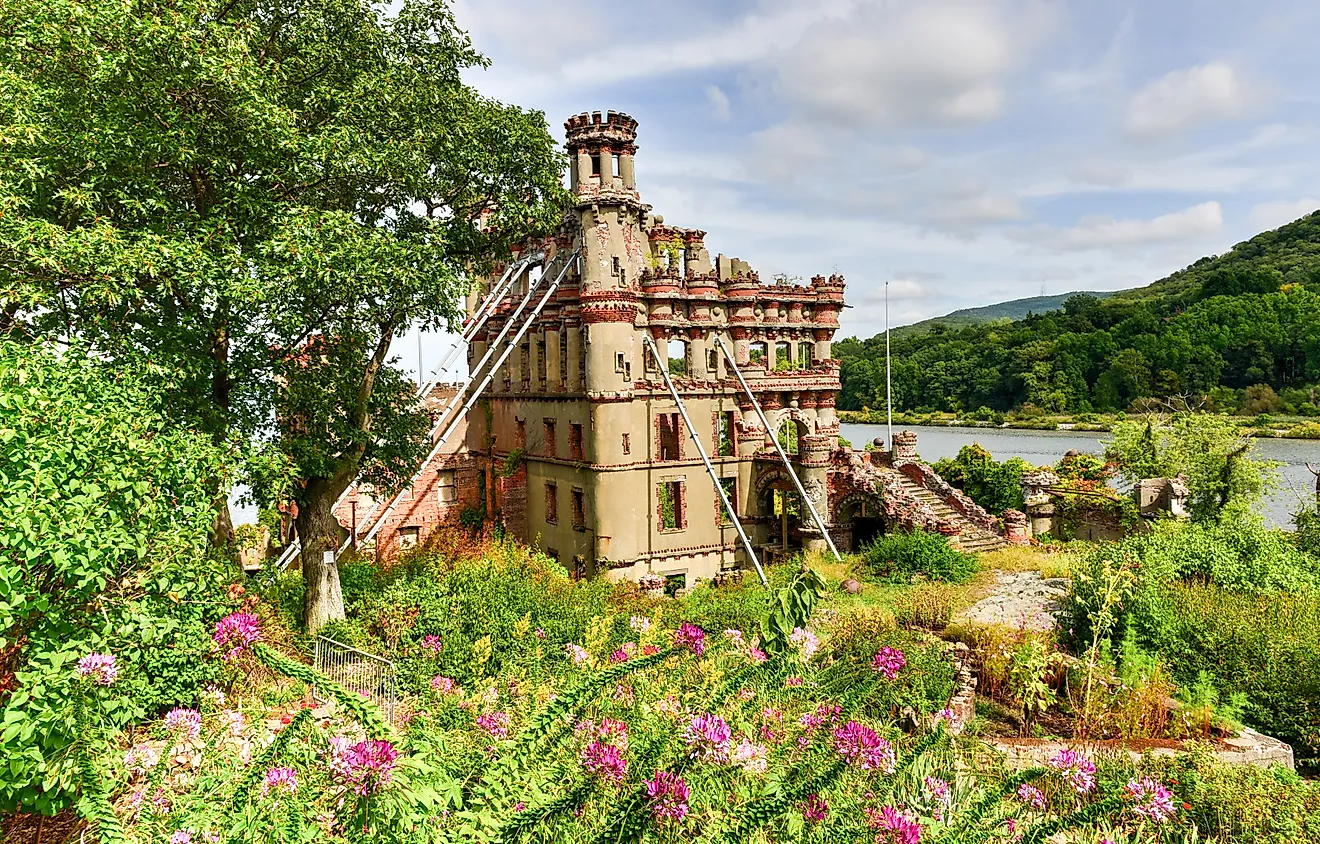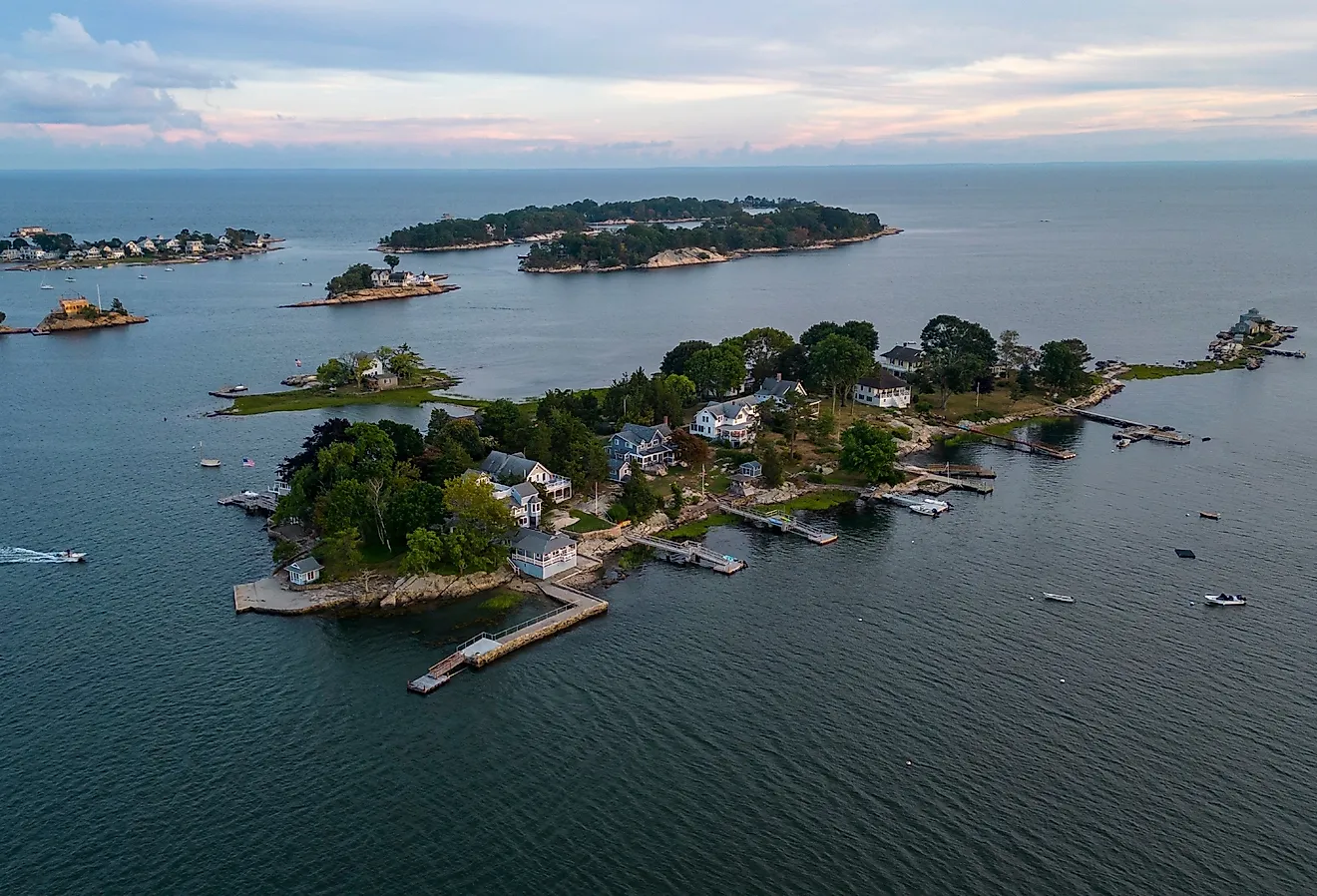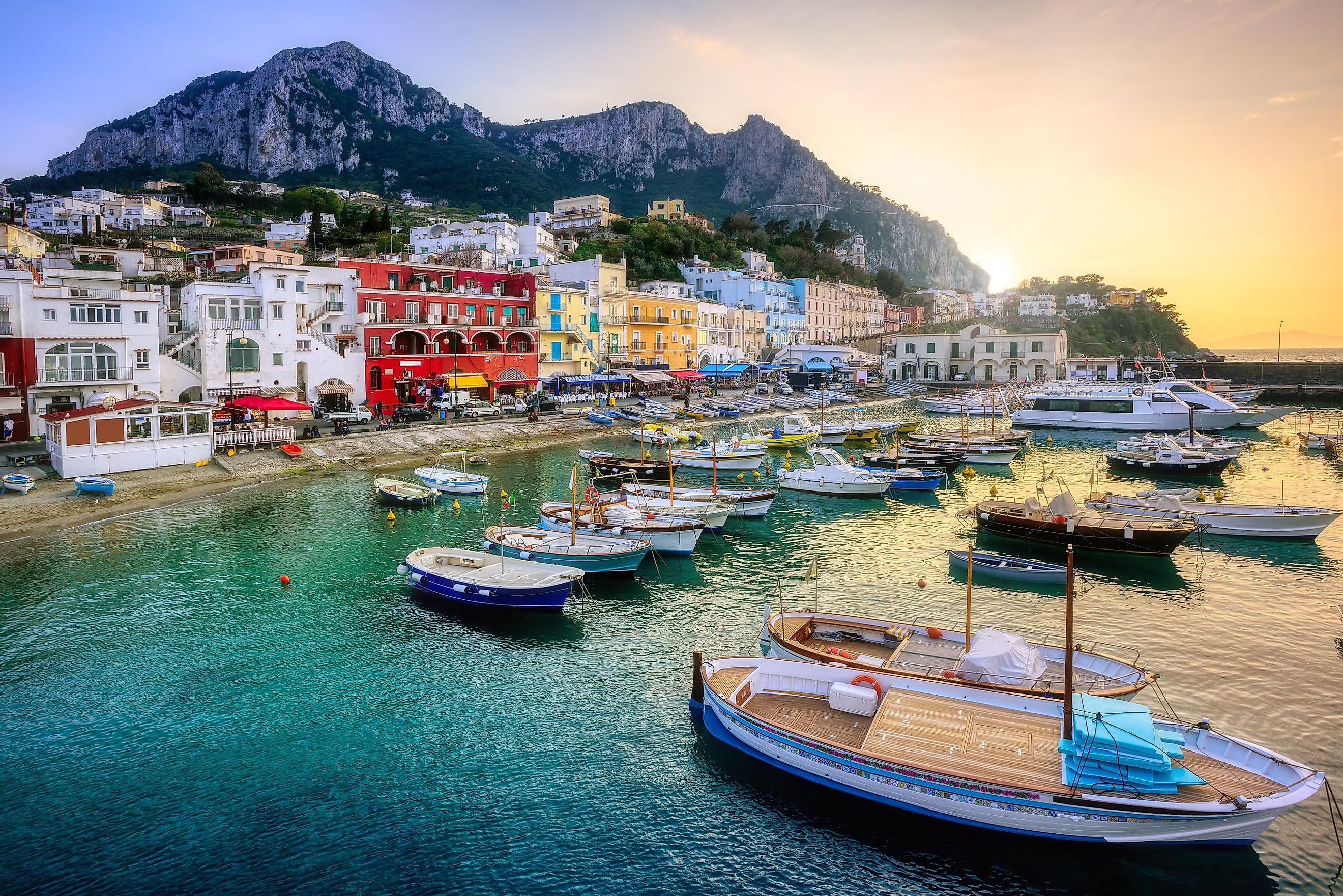
Capri Island
The Island of Capri is a mountainous island that is located in the Campania region of Southern Italy, directly to the west of the Sorrento Peninsula, on the southern edge of the Gulf of Naples in the Tyrrhenian Sea. This small island covers an area of only 10.4 km2 and serves as a popular tourist destination attracting numerous visitors from all over the world during the summer season.
Geography
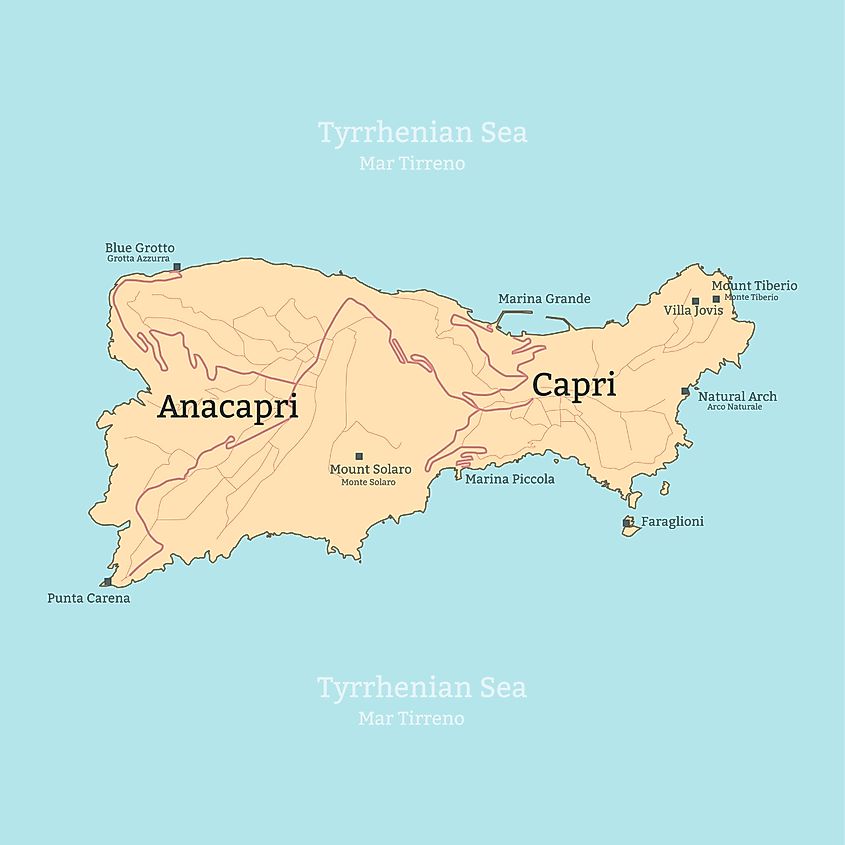
The mountainous Capri Island is composed of a single limestone block and measures about 6.25 km in length with a maximum width of 2.89 km. Situated on the island’s western side is Monte Solaro which rises to an elevation of 589 m and is the highest point on the Capri Island. The island’s coastline is lined by precipitous cliffs and features two main indentations, namely Marina Grande on the northern side which serves as the chief port of the island, and Marina Piccola on the southern side.
Located on the coast of Capri Island is the Blue Grotto (Grotta Azzurra), a naturally-formed sea cave, where the sunlight entering through an underwater cavity shines back up to the surface and creates a brilliant azure blue reflection. The Blue Grotto is about 50 m in length and has a maximum depth of 150 m. Feared by the inhabitants of the island in the 18th century for housing monsters and witches, it was rediscovered in the 19th century by foreign tourists who were visiting Capri Island.
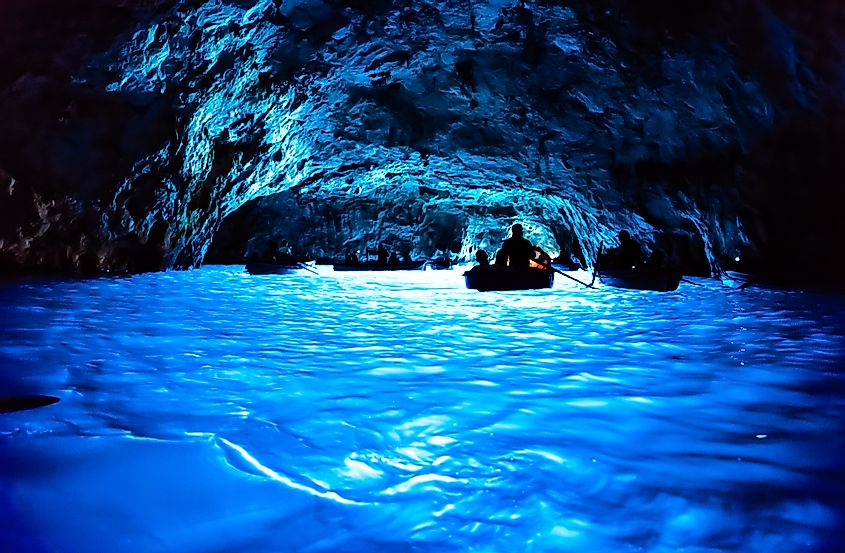
There are two separate communities on the island, namely Capri and Anacapri. The town of Capri serves as the island’s principal commune and its major population center.
The Island of Capri, due to its geographical position in the Gulf of Naples, experiences a Mediterranean climate with mild and wet winters and hot and dry summers.
Wildlife
The Island of Capri hosts the most varied flora in all of Italy and plants like Mediterranean bush, Ilex wood and Euphorbia have been observed here. Numerous fish species like conger eels, groupers, sargo, red goldfish, and mullets are found in the surrounding waters. The Capri Island hosts numerous avian species like robins, peregrine falcons, woodcocks, quails, and blackbirds. Various species of geckos have also been recorded on the island.
Brief History
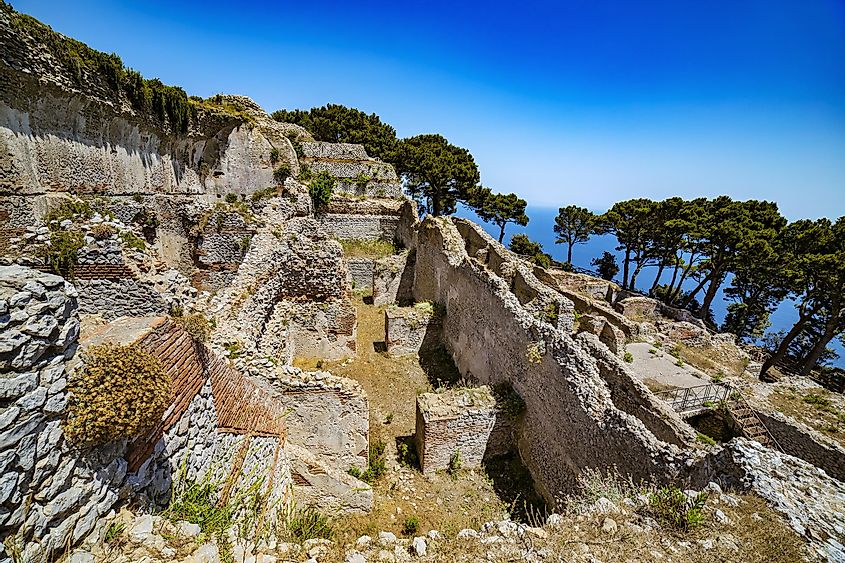
Geological excavations have revealed that Capri Island has been continuously inhabited since prehistoric times. The island then became a colony under Ancient Greece and in the following years, it served as a resort area for the early Roman Emperors. The Roman Emperor Augustus Caesar resided on the Island. Tiberius Caesar Augustus, who succeeded Augustus as the Roman Emperor, had built many Imperial Roman villas on Capri Island. One of his villas, the Villa Jovis located on the island’s northeastern edge, is considered to be one of the best-preserved Roman villas in all of Italy. It is widely believed that the Blue Grotto also served as the personal swimming pool of Tiberius.
After the fall of the Western Roman Empire, the Capri Island came under the dominion of Naples. During this time, the island was ravaged by a series of pirate attacks. As a result of the continuous pirate attacks, the population shifted from its seaside settlements to the towns of Capri and Anacapri which were located at higher altitudes. The Holy Roman Emperor Louis II handed over Capri Island to Amalfi in 866. Capri then became a residential diocese under Pope John XV in 987.
Capri Island was conquered by France under Napoléon Bonaparte in January 1806. After this, the island changed hands several times between the British and the French during the Napoleonic Wars. The island was reconquered by France in 1808 and was eventually returned to Naples in 1815.





